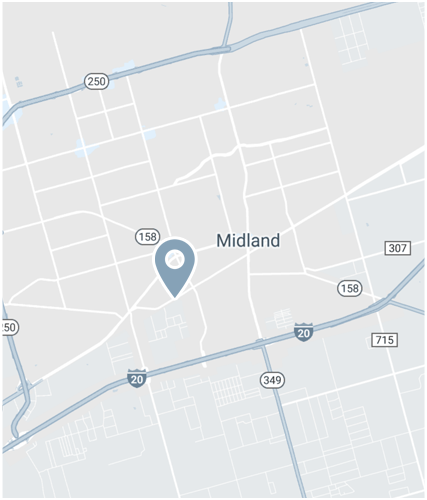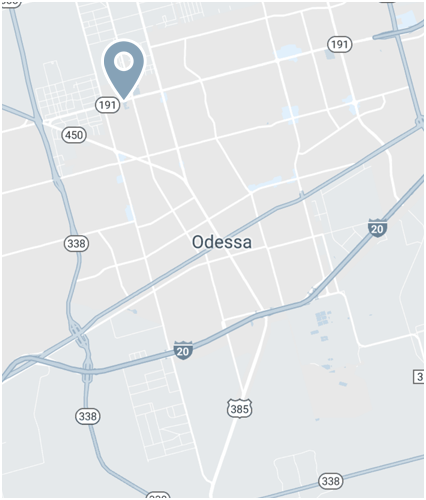LOCATIONS
Proudly Serving West Texas Families
and Contractors Since 1979
Odessa, Texas
Sims Plastics Waco is conveniently located to serve you. Our trucks can deliver your order anywhere
within a 20-mile radius of the store. We also offer shipping via local hotshots and freight carriers.
We’ll get it to you right quick!
Stop in or let us ship to you directly — anywhere in the US!

Water Tanks / Septic Tanks In Odessa, Texas
In the arid and expansive region of West Texas, reliable water storage and efficient wastewater management are fundamental for the well-being of both residential and industrial communities. Water tanks and septic tanks are the unsung heroes of this essential infrastructure, ensuring a consistent water supply and responsible waste disposal. Sims Plastics, a respected local company, has taken on the role of a key provider of high-quality water and septic tanks, offering a wide range of solutions tailored to the specific needs of the Odessa, Texas community. They represent esteemed manufacturers such as Norwesco® Horizontal Leg Tank and Norwesco® Vertical White Storage Tanks, making Sims Plastics the preferred source for these essential tank solutions.
Sims Plastics has positioned itself as a reliable supplier of water and septic tanks in the Odessa, Texas area, providing a variety of products designed to cater to the community’s unique requirements. Whether the aim is to store water for agricultural or industrial purposes, manage septic systems, or ensure a continuous water supply for households, Sims Plastics is dedicated to ensuring that Odessa, Texas residents, businesses, and agricultural operations have access to dependable, long-lasting, and eco-friendly tank options.
The Norwesco® Horizontal Leg Tank is a well-regarded water tank designed for safe and efficient water storage. These horizontal leg tanks are particularly suitable for applications where low-profile tanks are needed, such as agricultural and industrial use. They are known for their durability and their ability to withstand the challenging environmental conditions often found in West Texas.
On the other hand, the Norwesco® Vertical White Storage Tanks represent a trusted manufacturer in the field of vertical water storage tanks. These tanks are a practical solution for applications requiring efficient water storage in a vertical format, making them ideal for residential and commercial purposes. The vertical white storage tanks are designed to be both reliable and visually appealing, blending well with various settings.
Drainage Supplies / Septic Chambers in Odessa, Texas
In the heart of West Texas, where responsible water management and wastewater disposal are essential for the growth and well-being of the community, drainage supplies, and septic chambers are indispensable components of the local infrastructure. Sims Plastics, a reputable local company, has taken on the role of a primary supplier of high-quality drainage supplies and septic chambers, offering a comprehensive range of solutions tailored to the unique needs of the Odessa, Texas community. They represent esteemed manufacturers like Advanced Drainage System® ARC 36 PANEL & HIGH CAPACITY PANEL and Norwesco® 1000 GAL. LOW PRO PLUMBED SEPTIC TANK, making Sims Plastics the trusted source for these essential drainage and wastewater solutions.
Sims Plastics has established itself as a reliable supplier of drainage and septic solutions in the Odessa, Texas area, providing a wide array of products designed to address the community’s specific requirements. Whether the objective is to manage stormwater, handle wastewater efficiently, or ensure responsible septic waste disposal, Sims Plastics is dedicated to ensuring that Odessa, Texas residents, businesses, and agricultural operations have access to dependable, long-lasting, and eco-friendly solutions.
The Advanced Drainage System® ARC 36 PANEL & HIGH CAPACITY PANEL is a key product for stormwater management. These panels are designed to facilitate the efficient flow and containment of stormwater in various applications. Odessa, Texas, like many regions in West Texas, can experience sudden and heavy rainfalls, making effective stormwater management crucial. The high-capacity panels are known for their durability and ability to handle substantial water volumes while minimizing the risk of flooding.
The Norwesco® 1000 GAL. LOW PRO PLUMBED SEPTIC TANK is a highly regarded septic tank designed for efficient waste management in both residential and commercial settings. With a generous 1000-gallon capacity, this septic tank is well-suited for larger households and businesses. Its low-profile design is especially advantageous in areas with limited space or shallow soil depth, making it a practical choice for various installation scenarios. This tank is constructed to be durable, and capable of withstanding the demands of wastewater treatment effectively.
Water Well Pumps / Chemical Pumps in Odessa, Texas
In the arid landscape of West Texas, where water is a precious resource and reliable water supply is essential for residential and industrial applications, water well pumps and chemical pumps play a pivotal role. Odessa, Texas, is no exception, with its reliance on water wells and water systems for drinking water and industrial processes. Sims Plastics, a trusted local company, has taken on the role of a primary supplier of high-quality water well pumps and chemical pumps, offering a comprehensive range of solutions designed to meet the unique needs of the community. Representing renowned manufacturers like Grundfos® 3/4 HP 115V SCALA Booster Pump and A.Y.McDonald® DuraMAC™ 119 Gal. ELBI Pressure Tank, Sims Plastics is the go-to source for these essential pumping solutions.
Sims Plastics has positioned itself as a dependable supplier of water well pumps and chemical pumps in the Odessa, Texas area, offering a diverse range of products designed to cater to the community’s specific demands. Whether it’s ensuring a steady water supply for residential use, supporting agricultural operations, or facilitating industrial processes, Sims Plastics is committed to ensuring that Odessa, Texas residents, businesses, and industrial facilities have access to reliable, durable, and eco-friendly pumping solutions.
The Grundfos® 3/4 HP 115V SCALA Booster Pump is a highly regarded water well pump designed to boost water pressure in residential, commercial, and industrial settings. Odessa’s hot and dry climate necessitates efficient water delivery, making this booster pump a valuable asset. The Grundfos pump is known for its reliability, durability, and energy efficiency, ensuring that water is delivered where it’s needed, even in areas with challenging water pressure conditions.
The A.Y.McDonald® DuraMAC™ 119 Gal. ELBI Pressure Tank is a critical component in a well-functioning water system. It serves as a reservoir to maintain consistent water pressure and reduce the strain on well pumps. This pressure tank is especially valuable in Odessa, Texas, where varying water demands and well pump cycling are common. The A.Y. McDonald pressure tank is built to last and provides reliable, long-term performance, ensuring a steady and consistent water supply.
Irrigation Sprinklers / Irrigation Parts in Odessa, Texas
In the vast and arid landscapes of Odessa, Texas, water is a precious resource, and efficient irrigation systems are essential for maintaining agriculture, landscaping, and green spaces. Sims Plastics, a trusted local company, has emerged as a leading provider of irrigation sprinklers and irrigation parts, offering a range of products that cater to the unique needs of the region. Two prominent manufacturers represented by Sims Plastics in their inventory are Senninger Wobblers and Rain Bird Rotary Nozzles, both renowned for their excellence in irrigation solutions.
Sims Plastics, with its deep understanding of the Odessa, Texas area’s environmental challenges and agricultural requirements, has become a reliable partner in addressing the irrigation needs of residents, farmers, and landscaping professionals alike. Whether it’s irrigating crops, maintaining lush lawns, or landscaping projects, Sims Plastics provides a comprehensive selection of sprinklers and parts to suit a variety of applications.
Senninger Wobblers have gained recognition in the industry for their innovative design and efficiency in distributing water. These unique sprinklers create a rotating, wobbling pattern, ensuring that water is distributed uniformly over a large area. In Odessa, Texas, where water conservation is crucial, Senninger Wobblers are an excellent choice for maximizing irrigation coverage while minimizing water wastage. Their adaptability and versatility make them suitable for various irrigation needs, from agricultural fields to residential lawns.
Complementing the wobblers, Rain Bird Rotary Nozzles are another valuable product represented by Sims Plastics. These nozzles are designed to deliver efficient and consistent irrigation while reducing water consumption. In a region like Odessa, Texas, where water resources are limited, Rain Bird Rotary Nozzles are appreciated for their ability to provide uniform coverage and minimize runoff. They are ideal for maintaining healthy landscapes, including gardens, golf courses, and commercial properties.
Sims Plastics, as a local supplier, understands the specific irrigation requirements of the Odessa, Texas area. Their experienced team can offer expert advice, helping customers select the right irrigation sprinklers and parts to meet their unique needs. Whether you’re dealing with sandy soils, high temperatures, or other environmental challenges, Sims Plastics can guide you in making the best choices for your irrigation project.
PVC Pipe / PVC Connectors in Odessa, Texas
In the expansive landscapes of Odessa, Texas, versatile and durable materials are vital for a wide range of construction and plumbing applications. Sims Plastics, a trusted local company, is at the forefront of providing high-quality PVC pipe and PVC connectors to meet the unique demands of the region. Representing a variety of manufacturers, including CLASS 160 / 200 / 315 PIPE and CLEAR SCHEDULE 40 PIPE, Sims Plastics has become a reliable source for these essential building and plumbing materials.
Sims Plastics understands the local climate and infrastructure needs of Odessa, Texas, and they have built a reputation for offering superior products to ensure that residents and businesses have access to the best PVC materials for their projects.
CLASS 160 / 200 / 315 PIPE is a range of PVC pipes designed to meet different pressure and temperature requirements, making it suitable for various applications. In Odessa, Texas, where extreme temperature fluctuations can occur, these PVC pipes are a popular choice for plumbing and construction projects. Class 160 is typically used for low-pressure applications, Class 200 for mid-range pressure, and Class 315 for high-pressure applications. These pipes are known for their strength, durability, and resistance to corrosion, making them ideal for both above-ground and below-ground use.
CLEAR SCHEDULE 40 PIPE is another noteworthy product represented by Sims Plastics. These pipes are widely used in applications where transparency is essential, such as in visual inspection systems, aquariums, and water feature installations. Clear Schedule 40 PVC pipe is known for its exceptional clarity and is manufactured to strict standards to ensure structural integrity and safety. It can withstand pressure and is resistant to corrosion, making it a reliable choice for various plumbing and construction needs.
Sims Plastics, as a local supplier, takes pride in understanding the specific requirements of the Odessa, Texas area. Their experienced team can provide expert guidance, helping customers select the right PVC pipes and connectors for their unique projects. Whether you are working on residential plumbing, commercial construction, or industrial applications, Sims Plastics can help you make informed decisions.
PVC Fittings / PVC Valves in Odessa, Texas
In the heart of West Texas, where construction and plumbing projects require durable and reliable components, the demand for top-quality PVC fittings and PVC valves is significant. Sims Plastics, a trusted local company, has risen to meet this demand by offering a wide range of PVC fittings and valves designed to cater to the specific needs of the region. Representing respected manufacturers, including BRASS GATE VALVES and ROUND VALVE BOX, Sims Plastics has established itself as the go-to source for these essential plumbing and construction materials.
Sims Plastics takes pride in understanding the unique challenges and requirements of the Odessa, Texas area, ensuring that residents and businesses have access to the best PVC fittings and valves for their projects.
BRASS GATE VALVES are a popular choice for a variety of plumbing applications, offering strength, reliability, and longevity. In Odessa, Texas, where plumbing systems may need to withstand harsh environmental conditions and fluctuating temperatures, brass gate valves are well-suited for both residential and industrial settings. These valves are known for their corrosion resistance and the ability to provide a tight seal, making them an excellent choice for controlling the flow of water in pipelines.
ROUND VALVE BOX is another significant product represented by Sims Plastics. Valve boxes are essential for protecting and providing access to valves and other underground utilities. In Odessa, Texas, where maintaining the integrity of underground systems is crucial, round valve boxes are a preferred choice. These boxes are designed to be sturdy and resistant to environmental stressors, providing a reliable solution for covering and accessing valves in landscaping, irrigation, and utility projects.
Sims Plastics, as a local supplier, understands the specific requirements of the Odessa, Texas area. Their experienced team can offer expert guidance, helping customers select the right PVC fittings and valves for their unique projects. Whether you are working on plumbing installations, construction, landscaping, or utility maintenance, Sims Plastics can help you make informed decisions.
Join Our Team!
Sims Plastics is passionate about helping customers get the right solution for their project with the full attention and help of our friendly, dedicated staff. We believe in honesty and integrity, above all, and acknowledge that our employees are our most valuable asset. If you are interested in joining our team, please contact us at 1-800-456-1054 or email us today.
Come Be a Part of Our Family!
We Proudly Represent
Sims Plastics is proud to carry top brand names at the best available prices, including high-quality PVC, plastic irrigation and septic systems, parts and supplies. Don’t see the brand you’re looking for? Ask us. We know every name in the business.















